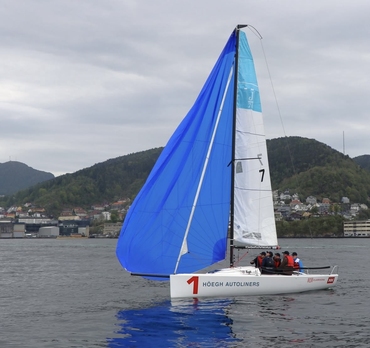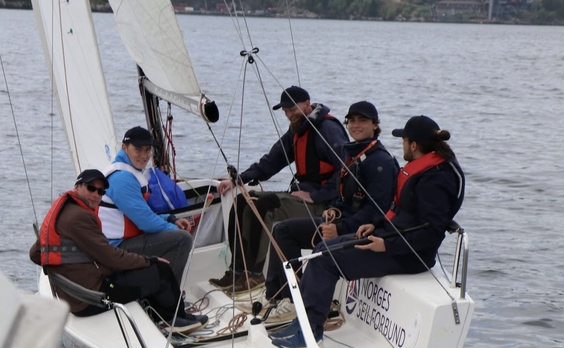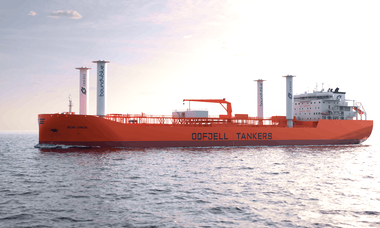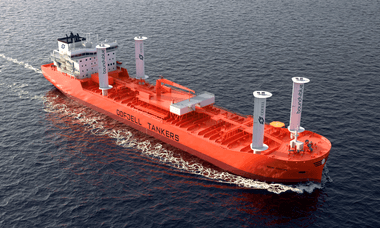Maximizing lift and efficiency
Odfjell has partnered with bound4blue, a pioneering developer of wind assisted propulsion technology (WAPS), and will install their innovative eSAIL system on the 49’k dwt chemical tanker in March 2025.
A suction sail is an advanced wind propulsion system that maximizes lift and efficiency. Just like a traditional sail, the suction sail captures wind energy. However, instead of relying solely on wind direction and pressure, it uses an aerodynamic thicker wing profile to generate lift.
Centuries-old sailing principles are combined with state-of-the-art aerodynamics, setting a new benchmark for wind-assisted propulsion.
In a standard modern sail, if the angle to the wind becomes too steep, the airflow detaches, causing a loss of lift. The suction sail, however, prevents this problem by actively controlling airflow.
The secret lies in a fan positioned at the top of the sail. This fan helps manage the airflow around the sail, ensuring that wind energy is captured efficiently. A porous surface on the sail allows air to be drawn in and channeled upward. The fan at the top of the sail expels this air, ensuring that the airflow stays attached to the sail surface.
By keeping the airflow smooth and controlled, the sail generates maximum lift, even in challenging wind conditions. The controlled lift translates into forward thrust, reducing the ship’s dependence on engine power.
Since the eSAIL generates up to seven times more lift than a conventional sail, it can be six to seven times smaller while delivering the same thrust.
The result is a propulsion system that delivers powerful thrust while remaining compact and easy to operate.
Hands-on learning: Understanding wind at sea
Before launching the suction sail project, the crew took part in a practical sailing exercise—on much smaller sailboats.
Why? Because the best way to understand wind dynamics is to experience them firsthand. By trimming sails, adjusting to shifting wind angles, and feeling how a boat reacts to different forces, the crew gained valuable insight into the mechanics of wind propulsion.
This hands-on approach provided a deeper understanding of the principles behind suction sail technology, showing the importance of harnessing wind power efficiently.


Setting a new standard in sustainable shipping
With less reliance on fuel-burning engines, vessels equipped with suction sails experience reduced fuel consumption and CO₂ emissions, leading to a more efficient and environmentally friendly voyage.
The implementation of suction sails marks another step forward in Odfjell’s efforts to improve efficiency and sustainability. With fewer emissions, lower fuel costs, and increased operational efficiency, this technology aligns with our long-term vision for a greener maritime industry.
Source: bound4blue.com


